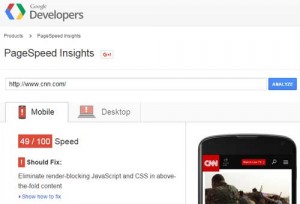Let’s face it. The positive impact of diversity and inclusion is no longer debatable.
According to Deloitte, diverse companies enjoy 2.3 times higher cash flow per employee. Gartner found that inclusive teams improve team performance by up to 30 percent in high-diversity environments. In a BCG study, companies with diverse management teams had a 19 percent increase in revenue compared to their less diverse counterparts.
Although diversity and inclusion (D&I) offers clear benefits, it’s difficult to implement. A major issue is that many companies believe they’re already promoting a diverse and inclusive culture. However, only 40 percent of employees agree that their manager fosters an inclusive environment.
Popular HR influencer, Brene Brown, says, “we need to do more than diversity and equity and inclusion. We need to create real belonging in our culture.” In her own business, Brown has gone so far as to reframe diversity, equity and inclusion (DEI) efforts as DEIB, which stands for Diversity, Equity, Inclusion and Belonging. Our philosophy on D&I is rooted in two themes: connection and belonging. These elements must go hand-in-hand in the workplace in order to truly make an impact.
What is diversity and inclusion?
First, it’s helpful to define diversity and inclusion.
Diversity refers to political beliefs, race, culture, sexual orientation, religion, class, and/or gender identity differences. In the workplace, diversity means your staff consists of individuals who bring new perspectives and backgrounds to the table.
Inclusion means that everyone in the diverse mix feels involved, valued, respected, treated fairly, and embedded in your culture. Empowering all employees and recognizing their special talents is part of creating an inclusive company.
Both aspects of D&I are important?diversity without inclusion can result in a toxic culture, and inclusion without diversity can make a company stagnant and uncreative. Companies are starting to focus more on diversity, but many disregard the inclusion piece of the puzzle. Without a concerted effort towards both inclusion and diversity, your workforce will feel out of place and unsupported.
Benefits of diversity and inclusion at work
A diverse and inclusive environment establishes a sense of belonging among employees. When employees feel more connected at work, they tend to work harder and smarter, producing higher quality work. As a result, organizations that adopt D&I practices see huge gains in the form of business results, innovation, and decision-making.
Bigger talent pool
If you aren’t changing the way your recruiting process is structured, you’ll always get the same type of people. Expanding your recruitment searches to more diverse candidates—including background, ethnicity, age, etc.—widens your talent pool and increases your chances of finding the best hire.
Besides the fact that diversity improves your current business, 67 percent of workers consider diversity when seeking employment. According to a Glassdoor survey, 72 percent of women, 89 percent of black respondents, 80 percent of Asians, and 70 percent of Latinos said workforce diversity was important to them. A significant majority of white respondents also said workforce diversity is important. Hiring more diverse individuals is crucial in attracting more interested, qualified applicants.
Increased employee engagement and trust
When employees feel included, they’re more engaged. Highly engaged employees go the extra mile for the organization. This higher engagement has a ripple effect on profitability, team morale, and retention. People working in inclusive workplaces also tend to have better physical and mental health and take less leave for health issues. When companies support D&I initiatives, a whopping 83 percent of millennials are actively engaged in their work.
What’s more, by building an inclusive work environment, you can instill greater trust between employees and leadership?an enormous problem in today’s workforce. Only 1 in 5 HR and engagement leaders agree that their employees deeply trust their company leaders. Teaching your leaders to recognize the unique talents of their team members and to reward employees for doing their best work can alleviate this issue and create a more inclusive workplace. It’s important to also remember that all employees need to recognize each other in order to breed a truly inclusive culture.
New perspectives and innovation
Your company has a much higher chance of coming up with fresh ideas with a more diverse group. The Harvard Business Review found a statistically significant relationship between diversity and innovation outcomes. The most diverse enterprises—in terms of migration, industry, career path, gender, education, age—were also the most innovative, as measured by their revenue mix. Each of the six dimensions of diversity were correlated with innovation, but industry, nation of origin, and gender had even larger effects on companies’ revenue.
Diverse teams can also better identify products and services that fit the needs of emerging customer profiles. Furthermore, many diverse employees have faced significant adversity in their life. These challenges forced diverse employees to hone their expertise and develop excellent problem solving skills.
Better decision-making
Diverse teams make better decisions. Cloverpop, an online decision-making platform, examined 600 business decisions made by 200 teams. They found that diverse teams have a 60 percent improvement in decision-making. In particular, gender-diverse teams outperformed individual decision makers 73 percent of the time, and teams diverse in geography, gender, and age made better business decisions than individuals 87 percent of the time.
Nevertheless, many companies exclude their employees from the decision-making process. The c-suite is responsible for making major business decisions; those that actively seek minority voices learn about the issues that diverse employees face. Consequently, leaders gain new perspectives and inspire employees to make a difference.
Improved performance
We’ve already discussed how D&I increases company profits, but this outcome is a direct result of increased productivity and performance. Diversity is a competitive differentiator?McKinsey found that for every 10 percent increase in gender diversity, EBIT rose by 3.5 percent. Companies with significantly more racial and ethnic diversity are 35 percent more likely to outperform competitors. Harvard Business Review also discovered that diverse companies are 70 percent more likely to capture new markets, which, in turn, yields higher performance.
Stronger business results and profits
Diversity and inclusion is obviously beneficial to employees’ mental health, but it also has downstream impacts that are good for business. In fact, Harvard Business Review found that more diverse companies report 19 percent higher revenue. A McKinsey report echoed this sentiment, stating that every 10 percent increase in the racial and ethnic diversity of a business’ senior-executive team leads to a 0.8 percent increase in earnings.
Additionally, businesses that are in the top quartile for racial, ethnic, and gender diversity have a 25 percent greater likelihood of being more profitable than the national median for their respective industry. This is especially true during times of crisis. Great Place to Work assessed hundreds of publicly traded companies before, during, and after a recession. Highly diverse, inclusive companies experienced a 14.4 percent gain while the S&P 500 saw a 35.5 percent decline in stock performance.
Challenges of diversity and inclusion
Of course, creating a diverse and inclusive workplace is easier said than done. There will always be growing pains when attempting to change your company culture on such a broad scale. Below are some of the top challenges that organizations face when it comes to leveling up their diversity and inclusion strategies.
Leadership involvement
Diversity and inclusion initiatives must align with your organizational goals and company values. Otherwise, they’ll always be pushed to the back burner. In one study of Fortune 1000 companies, 41 percent of respondents said their organizations had very informal diversity efforts with no structure because they’re “too busy”. Organizational change begins at the top. Upper management needs to allocate resources to D&I efforts, even in the face of uncertainty. Taking these steps shows employees that upper management is taking D&I to heart.
Once you’ve garnered adequate support, ask critical questions about your company’s workforce. Oftentimes, these questions bring about tough conversations, but those conversations are necessary in order to drive true change. Leaders must objectively assess where and how their D&I activities can be improved and communicate why.
In the end, the HR department and individual managers are responsible for enacting change and sustaining a D&I-centric culture. These groups should receive training to understand new HR policies and practices. Managers and HR departments must present a unified front that upholds D&I practices, and measure the company’s progress toward D&I goals.
Measurement
The only way to know if D&I is improving in your organization is to measure and track it. This means you need the right tools in place. Usually, this translates to an annual survey, but that’s simply not enough. Practicing continuous listening and having real-time insights into what your employees are thinking and feeling when it comes to D&I in the workplace helps properly define and assess major challenges and opportunities.
Continuously give employees the opportunity to voice D&I concerns, as they have an in-the-trenches view of possible conflicts that managers and higher-level staff may not. Encourage team leads to listen to the ways in which D&I is manifesting at all levels of the employee experience. Use this feedback to think of new ways to incorporate people-centric initiatives and build a trustful relationship with employees to foster better overall performance.
Be sure to measure diversity and inclusion–related KPIs before and after implementing each new D&I initiative. To determine whether or not your strategies are working, look at the change (or lack of change) in metrics. Coming up with diversity KPIs is relatively simple. You can break down your workforce by gender, race, geography, etc.
Inclusion is tougher to measure, but there are two key ways to do it. The first is to look at the Inclusion Climate—the equitable employment practices, integration of differences, and inclusion of decision-making. The second measure is the Perceived Group Inclusion Scale. This gauges employees’ sense of belonging and authenticity.
Remember: Gathering data is just one piece of the puzzle. You need to follow up and take action to ensure that you’re using insights to strengthen your approach and impact. For instance, if your employees or data tells you there is a noticeable lack of employee appreciation in a particular department, identify the obstacles and provide resolutions. Consider creating a campaign to increase activity in your employee recognition program to ensure everyone feels appreciated by their peers and managers.
Intervention and training
As mentioned above, management is a key component of a successful D&I program. This requires training management on what the company’s D&I goals are, why they’re important, and what’s expected of managers’ interactions with employees. Leadership teams need to lead by example, from integrating D&I into their hiring interview process to the way they treat their fellow employees. Bias training is especially important for hiring managers. Make sure they have the wherewithal to acknowledge their own bias, and ensure they’re hiring fairly. Every manager should build an inclusive team environment by listening to their employees and recognizing them for their everyday efforts.
While managers can lead the way, employees should still receive D&I training to help avoid and overcome biases. These training sessions need to show that you’ve done your research and you know about the current biases in your workplace. Explain how your D&I program is an opportunity for all employees to acknowledge and improve.
Silos
Many organizations struggle with silos, within departments or throughout the organization. Silos become dangerous because they encourage exclusivity rather than inclusivity, decrease productivity and productivity, etc. Before deploying a recognition program, Meijer, a family-owned superstore based out of the U.S. Midwest, was aware that silos between teams or groups within an organization can severely hinder collaboration. After implementing their recognition program, mteam, the strength of networks in each Meijer store location increased. In an effort to improve each team member’s sense of belonging, mteam has been able to bring team members together and increase connections.
Breaking down silos and increasing connections across your company are instrumental in strengthening D&I throughout your organization. If you’re unsure where to start, try Meijer’s approach and start leveraging the power of employee recognition.

How to foster diversity in the workplace
There are myriad ways to start incorporating diversity into your workplace. Here are a few of the ideas to get started.
Base standards on objective criteria
Objective criteria reduces the chance of bias or prejudice. Meet as a team to openly discuss these criteria, and build collaborative actions plans together to avoid unconscious bias as much as possible.
Frequently recognize and reward employees
Appreciating employees for who they are shows that you care about them as a person. Take full advantage of an engaging recognition and rewards program that encourages your workforce to celebrate their peers’ strengths, but also their uniqueness. Public recognitions are very impactful because they give a sense of belonging and offer company-wide visibility. Employees should be recognized by their c-suite, managers, and peers for everyday wins, both small and big. Recognition is a sure way to build a supportive and inclusive workplace culture.
“From a leader’s perspective, a tool like recognition should be used to promote inclusive leadership.” – How HCM Technologies Can Scale Inclusion in the Workplace by Gartner
It’s surprising that only 34 percent of companies that use effective recognition practices give recognition that’s inclusive. Recognition tools should be used to promote your company values, especially the ones that speak to your company’s D&I initiatives. Give your employees the ability to tie each recognition to a particular company value supporting D&I. Some company value examples surrounding D&I include: embracing cross-cultural diversity, committing to equality, and demonstrating respect .
Some recognition tools offer digital celebration cards to celebrate new hires, work anniversaries, birthdays, and milestones. Try experimenting with a variety of team-signed celebration cards to help foster a sense of belonging and make employees feel included from day one. Frequently embracing and recognizing differences can motivate employees to continue bringing their best self to work.
Leverage tools to measure D&I
Use staple HR tools to monitor your progress toward becoming a more inclusive, diverse company. Employee engagement software can help you better understand blind spots in all departments at all levels. For example, turn to your voice of the employee solution to measure how your workforce is feeling about current D&I initiatives and gather feedback on areas to improve. If you have a recognition platform in place, look at your recognition activity dashboards to immediately identify any teams or individuals that might feel underappreciated – ensuring everyone feels appreciated on an everyday basis is key to building an inclusive culture.
Consider adding other typical D&I KPIs like the percentage of employees belonging to minority groups, average tenure of employees based on age or ethnicity, etc. Measure these KPIs before and after you implement new D&I initiatives to understand where you are improving and where you can do more.
Double down on employee resource groups or committees
Building employee resource groups (ERG) or networks is a fantastic way for certain groups of people to connect and meet each other at work. Sometimes, enterprise companies can feel so big and isolating, so these groups can help everyone feel more comfortable and included in giving feedback. For example, consider starting a women’s network, LGBTQ+ network, or D&I committee.
Pro tip: Jeff Cates, CEO and President of Achievers, shares 11 employee networks to consider for your company to build an inclusive culture.
When you establish your ERGs, leverage every internal platform to promote them. For example, you can use your internal platform’s features to announce their establishment so employees can join, feature any upcoming events for employees to participate in, or request idea submissions. This helps spread awareness about ERGs and encourages people to sign up for D&I initiatives.
According to Jeff Cates, employee networks are “perhaps the single greatest way to promote the type of inclusive culture that helps people thrive and businesses stand out.” Outside of ERGs, think about establishing a D&I steering committee to drive and advocate for D&I initiatives. This steering committee should consist of all types of employees from all areas of the business who can provide suggestions, share best practices, and encourage their teammates to participate in D&I activities.
In addition to employee networks, think about your overall D&I strategy. Companies need to embrace D&I for an improved employee experience. Ask yourself, “How are my employee networks and other D&I initiatives guided by an overall D&I strategy?” At Achievers, we have a D&I steering committee that acts as the primary advocate for all things D&I, with a mission to drive D&I initiatives to success. Our D&I steering committee requires a good mix of committee members and representation from different areas of the company. When it comes to employee networks, our D&I committee helps with the following: drive awareness and education of employee networks, provide strategic guidance, and share industry research and best practices. As you build and grow your employee networks, remember to focus on creating thoughtful conversations and strategies around D&I in the workplace.
Practice psychological safety
It’s imperative that a workplace is a safe space for everyone. Establish a culture where people feel empowered to flag situations that are alarming, or even just uncomfortable. Workplaces that ensure psychological safety and trust help employees to speak up.
Gather employee feedback
Surveys and continuous feedback platforms give an opportunity to hear information directly from employees. Gathering honest feedback on a frequent, real-time basis allows you to course-correct if something is awry. If you’re not already, try leveraging pulse surveys to regularly capture your employee’s input and gather the pulse of engagement. Ask specific questions related to D&I to get employees’ thoughts on how to build a more inclusive work environment. Be ready to take action on feedback—this is critical for employees to provide feedback in the future. Show them that their voices matter.
Incorporate D&I into hiring practices and beyond
Diversity needs to be baked into your hiring practices. Start by setting up diverse panels of interviewers who will select candidates based on skills and experience. Train your hiring managers on unconscious bias and what can’t be asked during an interview, such as aspects of a candidate’s personal life or religion. This also applies to all employees. Every employee should be open and conscious of bias they might bring into a meeting or one-on-one session with a colleague.
Provide fun opportunities for every employee to connect and feel included. One example is to kick off virtual coffee chats, which connect two employees at random to meet and talk about anything they want. This helps employees across various locations and departments get to know each other and build meaningful relationships. Ultimately, this will lead to better collaboration and a culture of belonging.
Document best practices and policies
A company’s policies and practices should be available to all workers at all times. The code of conduct should be updated regularly and outline a company’s approach to diversity and non-discrimination. Consider adding a non-discrimination module into your annual employee training to reinforce its importance to the company. Other policies should clearly summarize the company’s stances on compensation and benefits, and employment conditions and termination.
Reap the benefits of a diverse and inclusive workforce
Not only is D&I a move in the right direction morally, it is also smart from a recruiting and company growth standpoint. As many as 57 percent of employees believe their companies should improve diversity among the internal workforce. Furthermore, an increasing body of evidence suggests that organizations that maintain their values and commitment to employees during economic hard times are the ones that continue to thrive.
Today, there are many tools that companies can use for D&I initiatives. A great platform, however, tackles D&I from many angles—it helps support your ERGs, rewards employees working on D&I initiatives, offers public and inclusive recognition, and even infuses specific values around D&I into your program. The platform should also help employees feel heard and empower managers to gather and take action on feedback, especially regarding diversity and inclusion.
Achievers is committed to creating a culture of belonging. Our award-winning platform is a great fit for organizations looking to strengthen their D&I initiatives. Start reaping the benefits of the Achievers platform by requesting a live demo.
Business & Finance Articles on Business 2 Community
(280)








